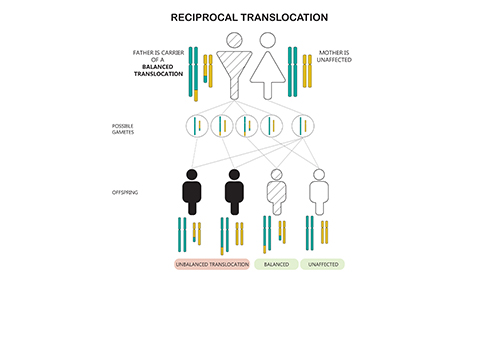Miscarriage Symptoms, Tests & Treatments
Miscarriage can be very distressing and refers to the loss of a pregnancy before the 5-month mark. Most miscarriages occur much earlier than this, typically before 2 months. Miscarriage is surprisingly common; it is estimated that around 1 in 6 pregnancies that are known about are miscarried and that a much higher proportion of extremely early pregnancies (up to a staggering 60%) are lost before they are even detected. Dr Hayden Homer offers professional advice, clinical diagnoses and treatment of miscarriage symptoms to minimise the risk of it occuring.
Recurrent miscarriage is a specific condition involving repeated miscarriages. The number of pregnancy losses required to make the diagnosis varies; in America, two losses of ultrasound-proven pregnancies are considered as recurrent miscarriage while in the UK, three pregnancy losses at any stage are required to make the diagnosis.
Dr Homer is an international expert on miscarriage and recently wrote the most comprehensive update on recurrent miscarriage, including which tests should be performed, which treatments are of proven benefit and importantly, which ones are not.
What are the symptoms and types of miscarriage?
In early pregnancy, the typical symptoms are bright red bleeding and lower abdominal pain. Abdominal pain is usually crampy in nature and is due to womb contractions, similar to a “mini-labour”. If the neck of the womb remains closed, this is called a threatened miscarriage and may resolve completely and leave the pregnancy unharmed. Occasionally however, the neck of the womb dilates (or opens) and the pregnancy is expelled. If everything is expelled, no further intervention is necessary; this is called a complete miscarriage. Sometimes, pregnancy products remain in the womb and this is called an incomplete miscarriage. These small pregnancy remnants may be passed spontaneously or may require removal, either using medication or surgery. The latter is commonly referred to as a D&C (for Dilatation and Curettage). In some cases, a pregnancy stops developing without producing any signs such as bleeding. These so-called missed miscarriages are often identified incidentally when an ultrasound is performed to date the pregnancy.
What causes miscarriages and recurrent miscarriages?
There are many causes of miscarriage. Treatment for only some of these have been shown to reduce the risk of miscarriage. In his recent paper, Prof Homer explored in detail the various causes and treatments for miscarriage. The main causes include chromosomal abnormalities in the embryo and in the parents, problems that affect the structure of the womb and problems that increase clot formation. Each of these areas are covered in more depth below.
Chromosomal abnormalities in the embryo:
At least half of all early miscarriages are due to chromosomal imbalances in the early pregnancy (known as the embryo). These abnormalities increase as women get older, especially above the age of 37 years.
Chromosomes are made up of DNA and carry the genes that determine important functions in the cells making up the body and define unique characteristics like hair and eye colour.

A normal human cell has 46 chromosomes made up of 22 pairs of so-called autosomal chromosomes (22×2=44) and two sex chromosomes, either two X chromosomes in females or an X and a Y chromosome in males (as shown in the image).

In many cases of miscarriage, cells in the embryo contain an abnormal number of chromosomes. For instance, an extra copy of chromosome number 21 leads to a total of 47 chromosomes instead of 46, due to three copies of chromosome 21 instead of the usual two. This condition of an extra copy of chromosome 21 is known as Down’s syndrome or Trisomy 21.
The vast majority of chromosomal abnormalities in embryos that lead to miscarriage arise because of errors during egg development. Importantly, these errors in eggs escalate markedly as women get older, especially beyond the mid-thirties, explaining why miscarriage and conditions like Down’s syndrome are much more common in women of these ages. Prof Homer is an internationally renowned expert in how female ageing causes egg quality to deteriorate, which in turn leads to problems with embryos and with pregnancy success. He set up Queensland’s first research laboratory dedicated to egg research to better understand this problem and develop innovative new treatments to help women achieve successful pregnancies.
Hayden recently wrote one of the most comprehensive reviews on how egg quality is affected by female age in the world’s top journal in reproductive biology.
Chromosomal abnormalities in the parents:
In 2-5% of patients with recurrent miscarriage, either the male of female partner carries a chromosomal rearrangement in which, two chromosomes have exchanged genetic material. One example of this kind of rearrangement is called a reciprocal (or balanced) translocation.

Although, in most cases, this does not produce any problems for the individual carrying the rearrangement, it may produce genetic imbalances when genetic material is reshuffled to make either sperm or eggs. If an imbalance occurs in the egg or sperm from such patients, the embryo will then also be imbalanced resulting in miscarriage.

Problems with the womb:
A successful pregnancy depends upon proper implantation of the embryo on the lining of the womb (endometrium). Consequently, anything that causes the internal surface of the womb to become distorted can also predispose to miscarriage.
The main treatable problems that affect womb structure and can cause miscarriage include polyps, fibroids, and a uterine septum. Polyps are very small over-growths of the endometrial lining. The vast majority are non-cancerous. Polyps can be easily removed using hysteroscopy.

Antiphospholipid syndrome (APS):
APS is present in 5-20% of women with recurrent miscarriage and is the most important treatable cause for miscarriage. The presence of APS predisposes to the formation of blood clots.
What tests should be performed to investigate whether there is a cause for recurrent miscarriage?
It should be noted that in around half of cases, all tests undertaken on the couple are normal.
Tests should aim to identify the recognised causes of recurrent miscarriage and include:
- Karyotyping. This is a blood test that is used to determine a couple’s chromosomal makeup. It will identify whether abnormalities such as translocations are present.
- Detailed examination of the structure of the womb. This will determine whether structural problems with the womb such as a uterine septum, submucosal fibroids or polyps might be present. A number of approaches can be used to study the womb including:
- 3D ultrasound scanning
- Saline Infusion Sonohysterography (SIS): Ultrasound scanning in combination with the instillation of saline solution into the womb cavity.
- Magnetic Resonance Imaging (MRI)
- Laparoscopy in combination with hysteroscopy: This allows direct visualisation of both the inner and outer surfaces of the womb. It also enables surgical correction of any abnormalities to be undertaken in a one-step procedure.
- Testing for anti-phospholipid antibodies. This is a blood test for:
- Lupus anticoagulant
- Anti-cardiolipin antibodies
- Anti-β2-glycoprotein I
Tests for anticardiolipin antibodies should be repeated after 12 weeks.
- Tests on the miscarriage tissue (or products of conception) to determine the chromosome makeup of the embryo.
For more details on tests for recurrent miscarriage, please refer to my recent paper.
What are the treatments for recurrent miscarriage?
- Genetic Counselling:
If a chromosomal abnormality is identified in either partner, genetic counselling is advised. This will provide insight into the particular abnormality involved and its likelihood of causing a significant imbalance in the embryo - Treatment for antiphospholipid syndrome:
Patients with recurrent miscarriage found to have antiphospholipid antibodies should be treated with heparin (from positive pregnancy test until at least six weeks following delivery of the baby) and daily low-dose aspirin (LDA, commencing prior to pregnancy until 34 weeks of pregnancy). - Surgery to correct structural abnormalities of the womb:
This involves hysteroscopic surgery to remove problems that distort the womb cavity such as fibroids, polyps and a uterine septum. For more detailed information, see my sections on Hysteroscopic Surgery, Uterine Fibroids and Uterine Septum. - Progesterone:
In around 50% of couples, full testing does not reveal an abnormality in either partner. Recent research has shown that these women benefit from using progesterone. It is important that progesterone is started at the correct time and is continued for the correct duration. Progesterone should ideally be started around the time of ovulation prior to becoming pregnant. - Tender Loving Care (TLC):
Patients find the psychological support associated with having regular ultrasound scanning very helpful. - Preimplantation Genetic Testing for Aneuploidy (PGT-A):
This is a genetic test that is performed on embryos produced through IVF to determine whether their chromosome make-up is normal. By selecting a chromosomally normal embryo it might be expected that PGT-A could reduce miscarriage. However, PGT-A has not been shown to help patients with recurrent miscarriage achieve a successful pregnancy any faster than trying naturally. It is possible that even though PGT-A may not shorten the time to successful pregnancy, it might reduce the number of miscarriages en route to a successful pregnancy, but this remains to be proven. There is some evidence that for women with infertility undergoing IVF (as distinct from women with recurrent miscarriage who are typically not infertile), PGT-A may be able to reduce miscarriage rates.
For a more detailed discussion of the complex issues surrounding PGT-A, please see my recently published paper. - Cervical Cerclage:
This is a surgical stitch that is inserted to help keep the neck of the womb closed. It is very unclear whether these stitches are effective in reducing miscarriage. They may be considered for a very small subgroup of women who have late pregnancy losses (after 12 weeks of pregnancy) and in whom the neck of the womb undergoes shortening during pregnancy.
For more details on treatments for recurrent miscarriage, please refer to my recent paper.

